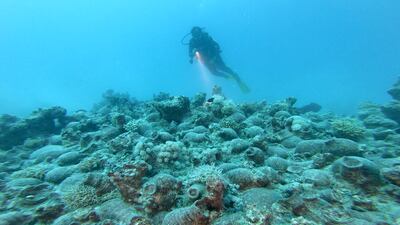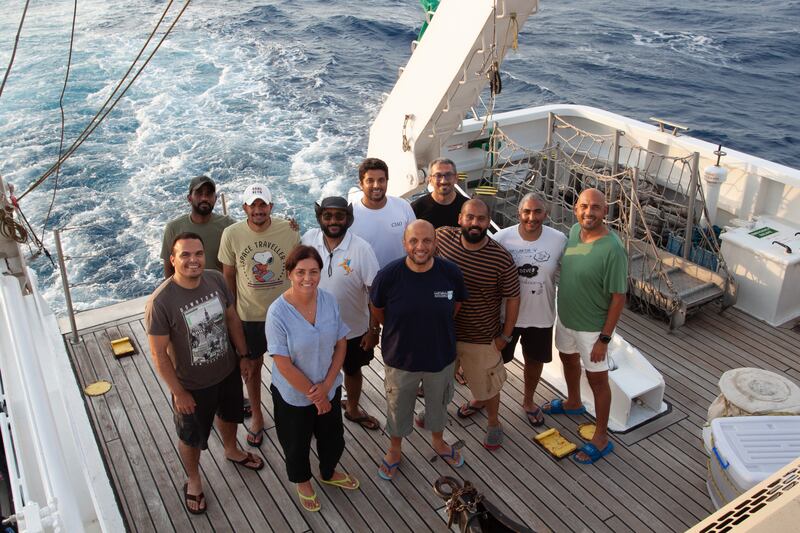Over seven years, a team of scientists and researchers have explored the depths of the Red Sea, mapping sunken artefacts long thought to have been lost to the water.
Through a series of diving expeditions, the team — brought together from around the world by the Saudi Heritage Commission — surveyed the waters just off the coast of the kingdom.
Their aim was to help piece together Saudi Arabia’s historical role in connecting continents through marine trade routes and to map out any submerged artefacts of national significance so they could be preserved and protected.
Chiara Zazzaro, associate professor of maritime archaeology at the University of Naples “L’Orientale” in Italy, and her colleague Prof Romolo Loreto, were brought in to help lead a team of Saudi and Egyptian researchers responsible for surveying the waters off Umluj, a city almost 300 kilometres west of Madinah, and Yanbu.
The team were granted access to a shipwreck dating back to the 18th century, in agreement with the Unesco convention for the protection of underwater heritage.
Discovered 15 years ago, the wreck was declared off-limits to divers soon after that when Saudi authorities found it had been partially looted.
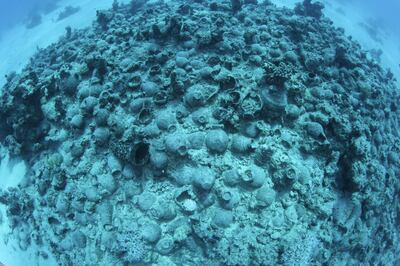
Within the 40 metre-long ship, Dr Zazzaro and her team found more than 3,000 jars, a collection of blue and white Chinese porcelain cups, scattered fragments of basins, glass bottles, coconut husks and personal objects such as clay pipes.
“We also found the exotic products from the eastern Indian Ocean, like nutmeg and coffee beans, with the help of our paleobotany specialist Matteo Delle Donne,” Dr Zazzaro told The National.
The team comprise six Saudi divers, archaeologists from the Heritage Commission, two Italian divers, three Egyptian divers from the Alexandria Center for Maritime Archaeology, one diver from King Abdulaziz University in Jeddah and an underwater cameraman.
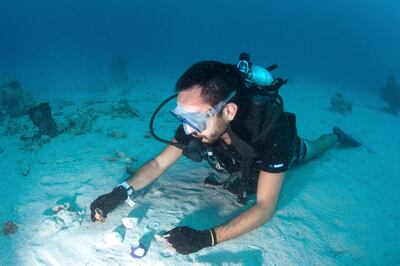
“On board the Al Azizi ship, the temporary floating home of the research team, we had a colourful group of experts from Saudi Arabia, Egypt and Italy, that have played big roles from the start up until the latest fieldwork excursion that concluded end of August,” Dr Zazzaro said.
The team would wake around 7am, when breakfast was served, then spend day diving twice or three times in groups of two to four divers.
“On board, we took care of organising the finds and inventory, drawing, photographing and describing them,” Dr Zazzaro said.
“ The Al Azizi research ship has space and facilities for storing materials and studying them.”
They used video recordings and 3D photogrammetry to record their findings. Measurements were taken and drawings were made of small objects, including single pottery artefacts and isolated elements of the hull.
Researchers have a theory that the ship sought shelter overnight but later sank after accidentally hitting a reef.
King Abdullah University of Science and Technology provided the ship for the researchers to work on and has pledged to continue supporting the project.
The Umluj shipwreck and its cargo represent the last pieces of evidence of an Arabian trade circuit before the European expansion in the Red Sea, a period still insufficiently investigated.
In cooperation with the Ministry of Culture, the Red Sea Development Company aims to house many of the artefacts found by the team in the country’s first maritime museum.
“[The museum] will become an educational attraction for future visitors, as well as to Saudis who are keen to understand their past and the central role the kingdom played in the development of the region,” said Oliver Wood, adventure and sports director at the company.
Artefacts too large to move or which would be damaged by excavation will be granted formal protection within the sea.
“Following the instructions of the Unesco convention for underwater heritage, ratified by Saudi Arabia, the shipwreck will not be moved and placed in a museum or research facility, to protect and keep the ship in its context, for people to appreciate it more,” Dr Zazarro said.
“The area is easily accessible, only 20 metres [deep]. So any diver can go there, even those who would rather snorkel because visibility is very good. Plus retrieving and restoring the whole wooden structure would be too costly and would take too much time.”
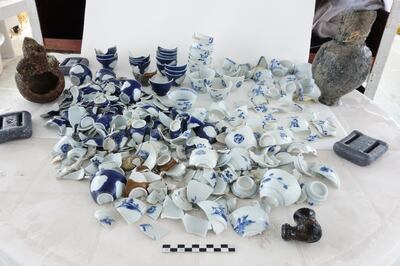
The current area of study covers 600 square kilometres in the northern part of the Red Sea, and includes more than 25 underwater sites.
Work was put on hold this month due to the researchers' other work commitments — ranging from university teaching obligations to other excavation projects elsewhere.
As a result, a big project such as the Umluj shipwreck may take several years to conclude.
“We dive for few weeks and the rest of the year we process, understand and interpret the data, to allow us to formulate new questions to plan for the next field season,” Dr Zazzaro said.
This year, Saudi Arabia's heritage commission announced plans to open a research centre to explore the Red Sea for submerged artefacts.
The commission will also conduct a vast underwater survey to look for submerged ships and other items from Umluj to Ras Al Sheikh Hameed, in partnership with King Abdulaziz University and University of Naples “L’Orientale” and perhaps other international teams.
“I hope we'll come back soon to the Umluj shipwreck. We are aiming to continue the excavation at Umluj and to take part in the second phase of their survey project that will take place from Jeddah to the south towards the north of the coastline,” said Dr Zazzaro.
“Next time around, it would be great to involve a marine biologist and a conservator in order to better understand the interaction among the shipwreck and its environment and to plan suitable and sustainable strategies for the conservation of the site.”
